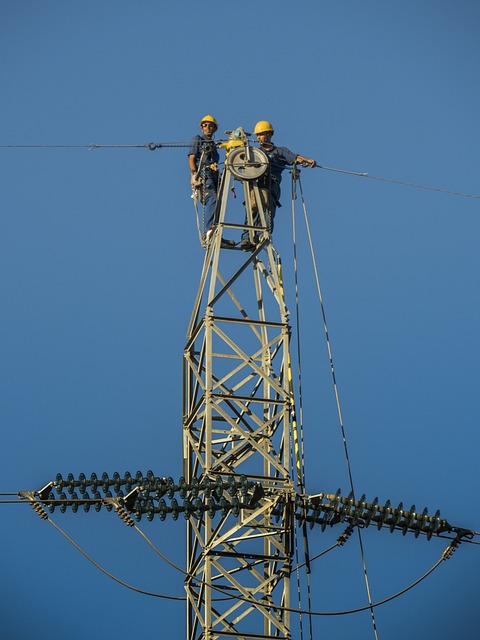Electricians play a crucial role during building inspections by ensuring electrical safety and code compliance. They identify hazards, detect faulty installations, and test fixtures to prevent electrocution, fires, and power failures. Using specialized tools and protocols, they assess wiring, outlets, and panels for non-compliance, fostering safer environments. Regular inspections by qualified electricians are vital for maintaining property safety, complying with codes, and protecting occupants, ultimately enhancing rental satisfaction and property value.
An electrician plays a vital role in ensuring building safety and code compliance. This article delves into the multifaceted responsibilities of electricians during inspections, from understanding local codes to identifying potential hazards. We explore essential tools and techniques they employ for comprehensive assessments, highlighting their impact on property maintenance and tenant safety. By examining these key aspects, we emphasize why electricians are indispensable in upholding structural integrity and mitigating risks in today’s built environment.
- Understanding the Role of an Electrician in Building Inspections
- Code Compliance: What It Entails and Its Significance
- Identifying Safety Risks During Routine Checks
- Essential Tools and Techniques for Comprehensive Building Assessments
- The Impact of Efficient Inspections on Property Maintenance and Tenant Safety
Understanding the Role of an Electrician in Building Inspections
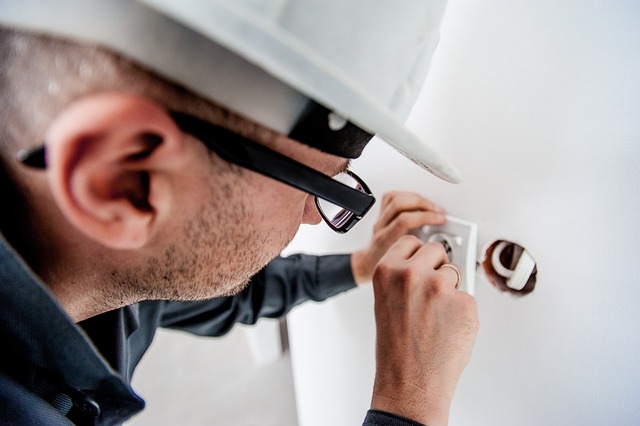
During building inspections, electricians play a pivotal role in ensuring the safety and code compliance of electrical systems. They are equipped to identify potential hazards related to wiring, outlets, fixtures, and other electrical components. An electrician’s expertise is crucial for detecting faulty installations, outdated wiring, or non-compliance with local electrical codes.
These professionals inspect and test electrical systems to guarantee they meet safety standards. By assessing the overall condition of electrical fixtures and appliances, electricians help mitigate risks associated with electrocution, fires, or power failures. Their involvement in building inspections is indispensable for maintaining a safe living and working environment.
Code Compliance: What It Entails and Its Significance
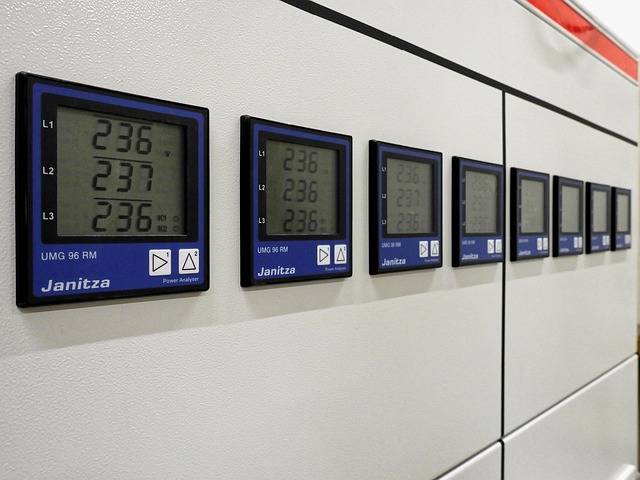
Code compliance is a critical aspect of building inspection, ensuring structures meet local and national safety standards. It involves verifying that every element of a building adheres to relevant codes and regulations, from structural integrity to electrical systems and fire safety measures. Electricians play a pivotal role in this process by scrutinizing wiring, outlets, and other electrical components to guarantee they are up to code and pose no potential hazards.
The significance of code compliance lies in its ability to protect the well-being of occupants and prevent catastrophic incidents. It ensures buildings are safe havens, minimizing risks associated with faulty wiring, gas leaks, or inadequate safety features. Regular inspections by qualified professionals, such as electricians, help identify and rectify issues early on, ultimately saving lives and safeguarding investments.
Identifying Safety Risks During Routine Checks
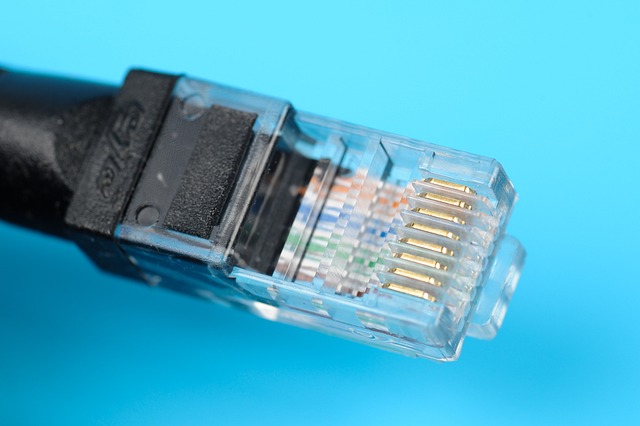
During routine building inspections, identifying safety risks is a multifaceted task that requires meticulous attention to detail. A qualified electrician plays a pivotal role in this process, as they can spot potential hazards related to electrical systems—a critical component often overlooked during general checks. By scrutinizing wiring, outlets, and fixtures, an electrician ensures that the building complies with local electrical codes and identifies risks such as faulty wiring, outdated electrical panels, or overloaded circuits, which could lead to severe consequences like fires or power outages.
Routine checks also involve assessing structural integrity, fire safety systems, and accessibility, but it’s the electrician who brings a specialized eye to identifying electrical safety risks. They are trained to recognize not only immediate dangers but also potential long-term issues that could escalate into critical safety hazards if left unaddressed. This proactive approach ensures the well-being of occupants and facilitates the timely rectification of any non-compliance, fostering a safer environment for all.
Essential Tools and Techniques for Comprehensive Building Assessments
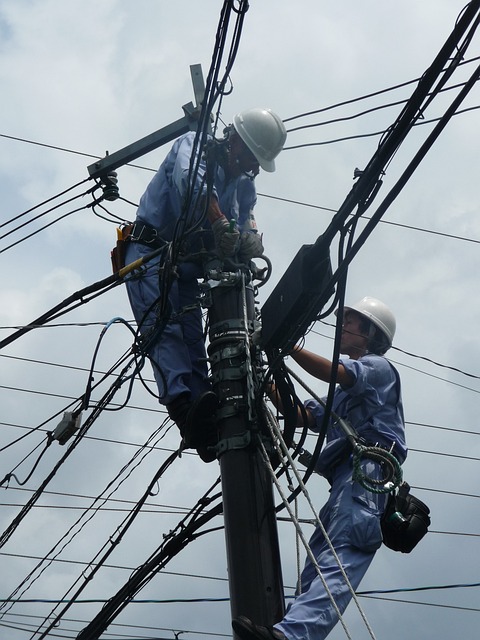
Comprehensive building assessments require a toolkit of essential tools and techniques to effectively inspect for code compliance and safety risks. One of the cornerstone tools for any professional electrician is the electrical inspection kit, which includes voltage testers, multimeters, and insulation resistance meters. These devices help identify faulty wiring, loose connections, and potential electrical hazards that could pose significant risks to occupants and property.
Additionally, high-quality digital cameras with zoom capabilities are indispensable for documenting visual defects and taking detailed images of problematic areas. Using these tools in conjunction with established assessment protocols ensures a thorough examination. For instance, a systematic checking of structural elements, fire safety systems, and ventilation can reveal potential issues that might go unnoticed otherwise. These techniques enable electricians to provide accurate reports, recommend necessary repairs, and contribute to creating safer living and working environments.
The Impact of Efficient Inspections on Property Maintenance and Tenant Safety

Efficient building inspections are pivotal for maintaining property safety and ensuring compliance with relevant codes. Regular and thorough assessments by qualified professionals, such as electricians, play a critical role in identifying potential hazards and risks that may go unnoticed otherwise. These inspections not only protect tenants but also safeguard the property’s value and integrity.
By implementing rigorous inspection protocols, landlords and property managers can proactively address safety concerns, including electrical issues, structural weaknesses, and fire hazards. Prompt identification of these problems allows for timely repairs, thus preventing more severe damage or accidents. Well-maintained properties attract tenants, enhance rental satisfaction, and contribute to a positive reputation among potential residents. Efficient inspections, therefore, serve as a cornerstone in fostering a safe living environment and promoting property value retention or increase.
In conclusion, electricians play a pivotal role in ensuring building safety through comprehensive inspections. By understanding code compliance, identifying potential risks, and utilizing appropriate tools, they contribute significantly to maintaining property integrity and protecting tenant well-being. Efficient inspection practices have far-reaching effects, fostering proactive property maintenance and enhancing overall safety standards.
